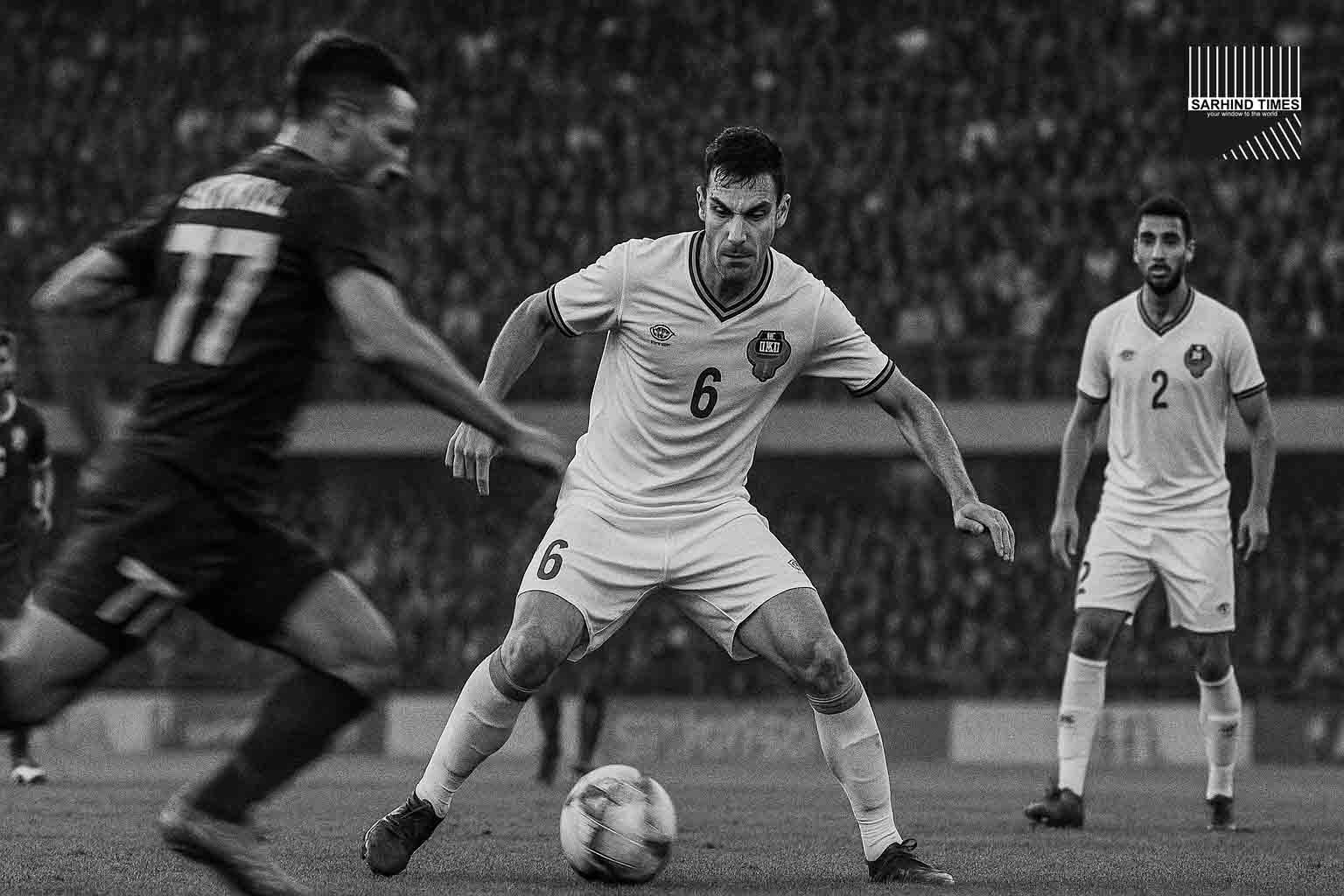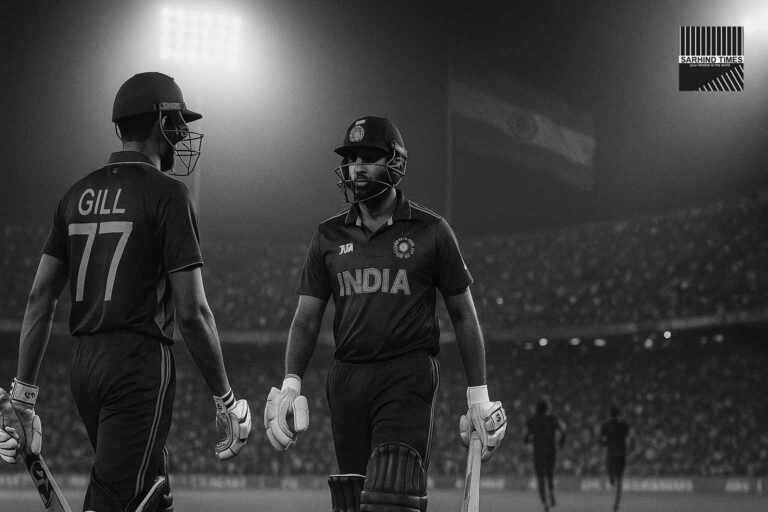By Sarhind Times Sports Desk | Hisor (Tajikistan) / Panaji | October 2, 2025
HISOR: FC Goa’s continental campaign took a heavy blow on Wednesday night as the Indian Super League side fell 0–2 to FC Istiklol in the AFC Champions League Two (ACL Two) Group D, their second defeat in as many games. Second-half strikes from Rustam Soirov and Reza Dehghani sealed the result at the Hisor Central Stadium, punishing Goa’s wastefulness before the interval and leaving the Gaurs with ground to make up in a group that also features Al Zawraa (Iraq) and Saudi heavyweights Al Nassr
Goa had come into the fixture searching for a response after a flat opener at home against Al Zawraa, where a late concession compounded a 0–2 loss. But in Hisor they found a resilient Istiklol that absorbed pressure, backed their legs in the last half-hour, and struck decisively. The Tajik champions, thrashed 0–5 by Al Nassr on Matchday 1, used the occasion to reset their campaign; Goa, by contrast, now stare at must-win territory with back-to-back fixtures that will define their October.
How the night unfolded
The first 45: Goa carried the early initiative. Their front line and full-backs moved the ball quickly into the channels, teasing space behind Istiklol’s full-backs. In transition, the visitors found pockets around the ‘D’ but couldn’t stitch the final pass. Istiklol, feeling their way after a chastening opener against Al Nassr, were measured: take no early risks, contest second balls, and ride the crowd’s patience. Goa’s best moments came from diagonal switches and a couple of cut-backs; the home side’s best from speculative strikes that tested the gloves rather than the net.
The turn: Tight games turn on sequence, not just moments. Within ten minutes of the restart Istiklol snapped into duels higher up, compressing the midfield lane where Goa had enjoyed time on the ball. The Tajik side’s wing rotations started to bite; Goa were forced into longer passes at lower accuracy.
The goals:
- 1–0 (Soirov): A classic counter-punch—Istiklol broke past the halfway line after regaining possession in the inside-left channel; the first pass took Goa’s shape out, the second found Rustam Soirov angling his run across the centre-backs. The finish was cool, the stadium warm.
- 2–0 (Dehghani): With Goa committing numbers, Reza Dehghani arrived late on the far side to meet a low cross and steer home, closing the night and the window on a comeback.
By the end, Istiklol’s plan read simple on the chalkboard and emphatic on the scoreboard.
The numbers behind the narrative
While official ACL Two stat packs were still being compiled at press time, the shape of the contest was clear: Goa dominated territory for long spells in the first half, but Istiklol finished higher on xG in the second period and comfortably ahead on goals—the only column that counts. The venue, Hisor Central Stadium, mattered too; at home Istiklol found a different gear and different belief compared with their 0–5 loss to Al Nassr on Matchday 1.
What this means for Group D
Two games in, Goa are 0 points from 2, bottom of a group where Al Nassr have begun flawlessly and Al Zawraa look organised and ruthless in transition. That immediately sharpens Goa’s next two fixtures: drop further points and the knockout conversation becomes academic rather than aspirational. The draw itself—pitting Goa with Istiklol, Al Zawraa and Al Nassr—was always a gauntlet; the margins for an Indian club to advance were thin from the start.
Context of Group D results so far:
- Al Nassr 5–0 Istiklol (Matchday 1) — a statement win from the Saudi side.
- FC Goa 0–2 Al Zawraa (Matchday 1) — a damaging home reverse for Goa.
- Istiklol 2–0 FC Goa (Matchday 2) — Istiklol rebound; Goa slide deeper.
Tactical notebook: where the game was won and lost
1) First contact, second balls
Against West and Central Asian sides, first contact on long exits and the second ball after the duel often decide territory. For forty minutes Goa managed this well; after the break, Istiklol’s midfield screen snapped up more second balls, cutting Goa’s carry-progressions at source.
2) Width vs. depth
Goa’s plan to stretch Istiklol with full-backs worked until the hosts began anticipating the switch and releasing their wide men earlier. That flipped the dynamic: Goa’s full-backs suddenly had runners behind them; centre-backs were dragged to the flank; half-spaces opened for Istiklol’s step-ins.
3) Defensive distances
On both goals, the distance between Goa’s midfield line and centre-backs grew a fraction too large—tiny in tape measure, massive in effect. Once Soirov could run across the hips of the line for the opener, Istiklol smelled a night to chase.
4) The last ball
Goa entered the attacking third often enough to merit more than zero. But the last action—a pass rolled slightly behind, a touch a shade heavy, a finish straight at the keeper—betrayed a side not yet settled at continental tempo.
Travel, tempo, and the continental learning curve
Staff around the squad pointed to travel fatigue and defensive lapses. Those are realities, not excuses, for Indian sides in Asia. The distances are long, the styles contrast sharply from ISL rhythm, and the decision-making window shrinks against physically assertive blocks. The broader story is familiar: Indian clubs often compete in phases but convert in too few, a gap that shows most at the business ends of halves. This match fit that template—encouraging approach play early, punished inefficiency late. (Local and national reports from Indian outlets highlighted the same themes in their match wraps.)
Where FC Goa go from here
1) Must-win mode
Mathematically, nothing is settled in two matchdays; practically, one point from six in a four-team group is a red line. Goa will almost certainly need two wins from their next three to have a live shot at progression, including taking points off Istiklol in the reverse and finding something against Al Nassr.
2) Selection & structure
The staff’s choices now revolve around whether to anchor the middle with another ball-winner to protect the back line’s distances, or double down on ball-secure profiles and back themselves to dictate tempo. On the ball, they need earlier releases into the box from the byline and fewer extra touches around the D.
3) Moments & margins
In continental football, goals often come from three-pass chains: regain-release-finish. Goa produced the regain; they must speed the release, sharpen the finish.
Istiklol’s reset
For the Tajik champions, this felt like a reboot after the 5–0 bruising in Saudi Arabia. The plan in Hisor had three clear levers: control the central lane, empty the wide zones to bait Goa forward, and then attack the vacated space with runners. Credit also to their defensive line for not collapsing into the six-yard box when Goa carried the ball wide; it let them contest crosses at the top of the area rather than inside the keeper’s lap. The second goal, finished by Reza Dehghani, reflected that poise: runners, angles, and economy.
The Indian club problem, revisited
Every continental cycle reopens a familiar debate: why do ISL teams that look assured domestically struggle to translate in Asia? The answers are incremental, not dramatic:
- Speed of play: The time to settle the ball shrinks by a touch; that touch creates the turnover.
- Set-piece brutality: Opponents punish one lapse; Indian sides often need two or three good deliveries to find one clean look.
- Transitions: The efficiency of the first forward pass after a regain—flat, punched, to feet—is a separator.
- Load management: Domestic calendars and travel compressions can blur micro-preparation windows for specific rival shapes.
Goa, to their credit, have invested in a possession identity. The continental step is to bolt directness onto that identity in the final third when the game asks for it—earlier crosses, harder runs, greedier shot maps.
Key moments (minute-by-minute, highlights)
- 9’–15’: Goa’s first sustained spell; two half-chances from the right cut-back channel.
- 32’: Istiklol’s long-range sighter forces a tidy stop—first warning that they’ll shoot on sight.
- 48’–55’: The hosts push their line higher; Goa’s midfield gets crowded.
- 60’: Soirov breaks the deadlock.
- 81’: Dehghani arrives to make it two, killing the contest.
Player radar (concise)
- FC Goa – Bright spells: The right-sided combos opened lanes repeatedly before the break; the keeper’s handling was assured under long-range traffic.
- Needs lift: The centre-backs’ starting positions after turnovers; the No. 9’s hold-up under contact; end-product from promising carries.
- Istiklol – Standouts: Soirov for movement across the line; Dehghani for timing; the screening midfielder who ate up second balls and reset possession with simple angles.
Venue & atmosphere
Hisor Central Stadium—compact, loud, and unpretentious—was a factor. It’s a ground that rewards verticality and second-phase aggression; Istiklol used both. Goa are no strangers to tough away days, but this one asked a test most Indian sides still find difficult: take your one big first-half chance before the home side grows into the game.
The road ahead: fixtures & stakes
With Al Nassr flying and Al Zawraa already with points in the bag, Goa’s path is narrow. They will have to flip the Istiklol result at Fatorda, protect home turf without giving up cheap transitions, and extract a result from one of the group’s two giants to re-enter the math. On current form, Al Nassr look like the class of the section—two wins from two including the 5–0 over Istiklol and a professional 2–0 in Baghdad—leaving the other three to scrap for a distant second.
What the coach staff can bottle—and what they must bin
Bottle: The courage to play on the half-turn and take the ball between lines in a loud away ground.
Bin: The extra touch at the ‘D’. It’s the difference between a blocked shot and a shot on frame; between pressure and points.
Training cues before the return fixture:
- First-pass quality out of the regain (pace and angle).
- Backline distances when the full-back goes.
- Near-post runs on early crosses (two bodies, not one).
- Set-piece rehearsals—deliveries that land on the run, not the head.
Big picture: it’s still a learning season
No one match speaks for a club’s continental capacity. Goa’s approach play shows they belong at this level in phases; the task is to lengthen those phases and improve their conversion rate. For Indian football, every ACL Two run is both a scoreboard and a classroom. The Gaurs have the ball to play; they now need the bite to win.
#FCGoa #ACL2 #AFC #IndianFootball #ISL #Istiklol #GoaFootball #AsianNights























+ There are no comments
Add yours